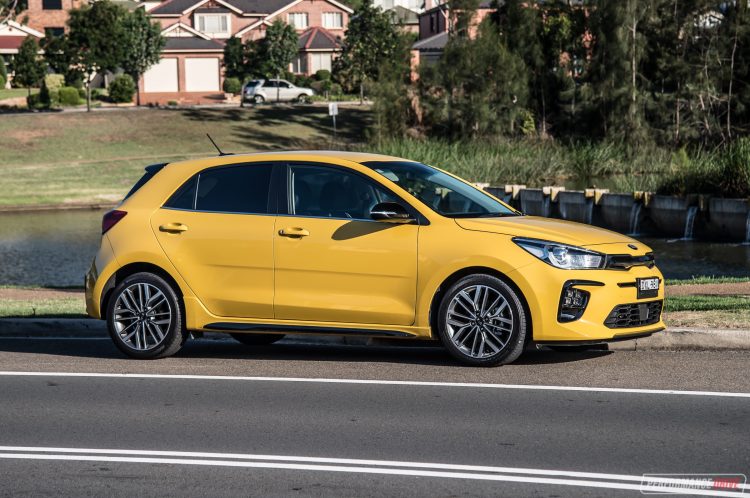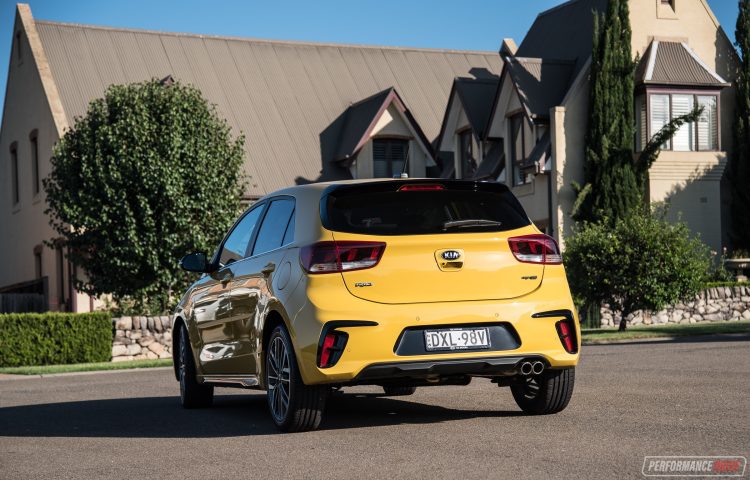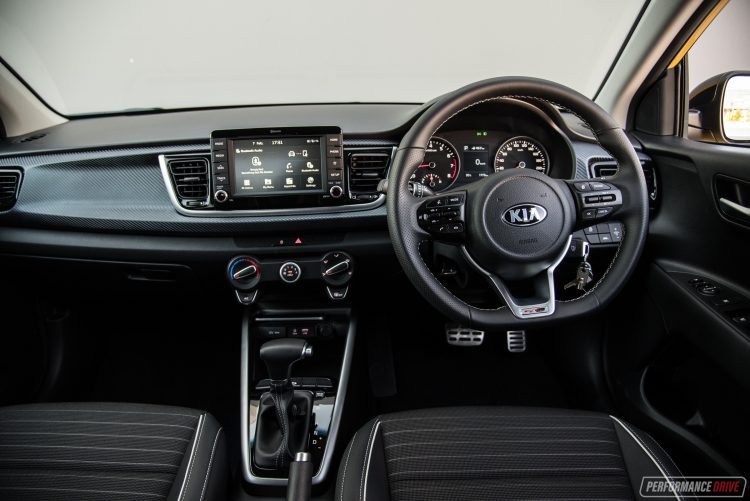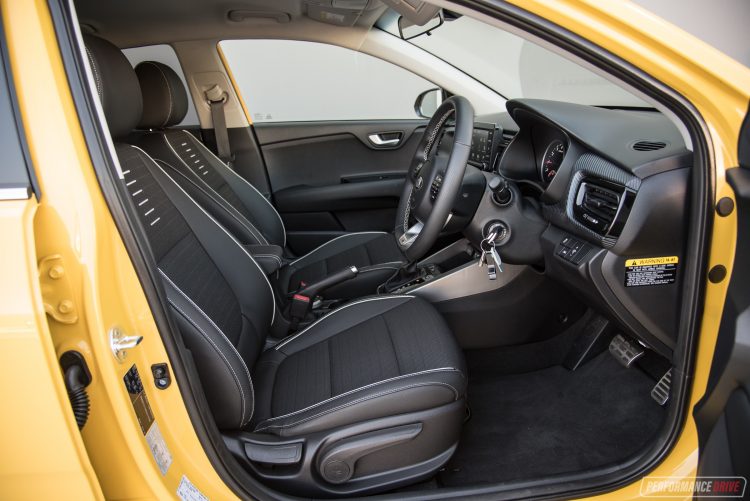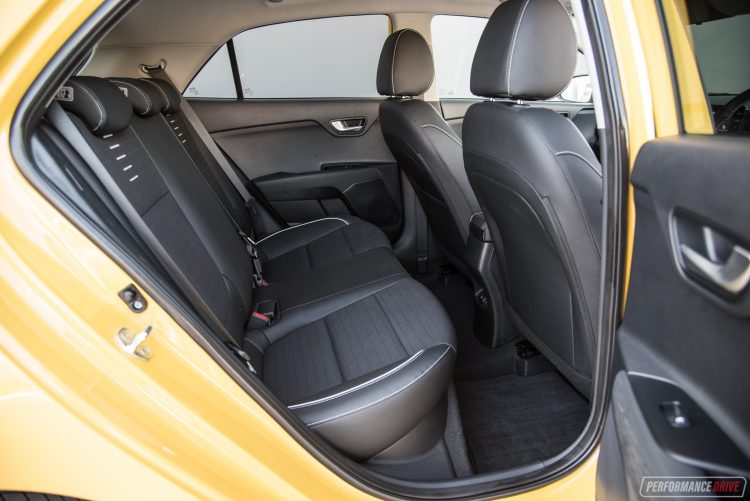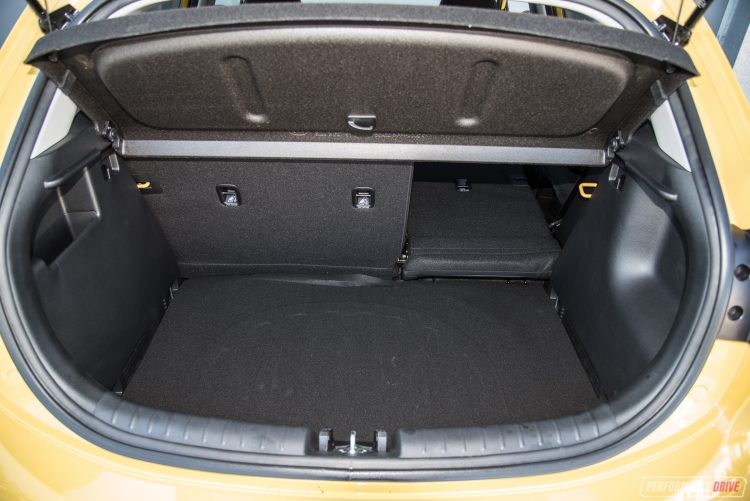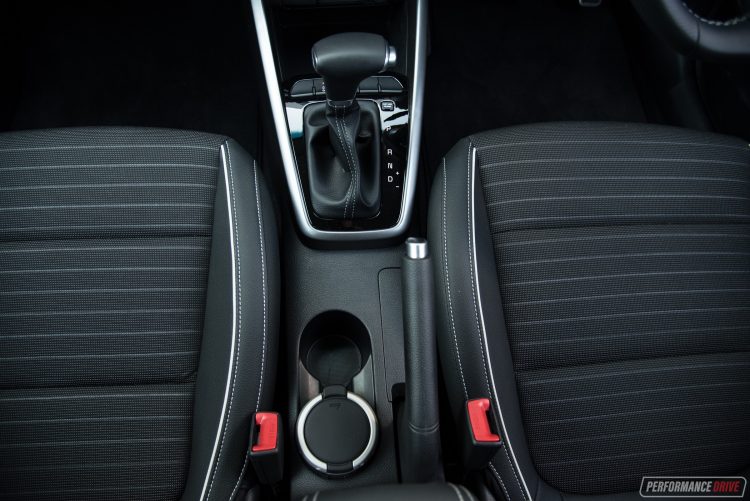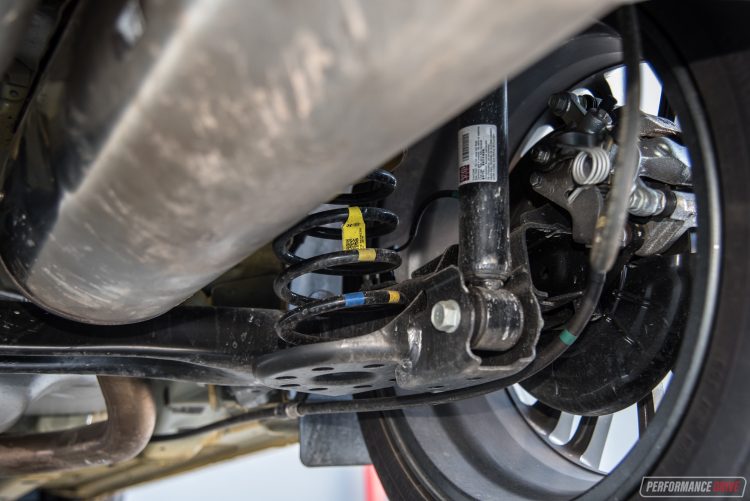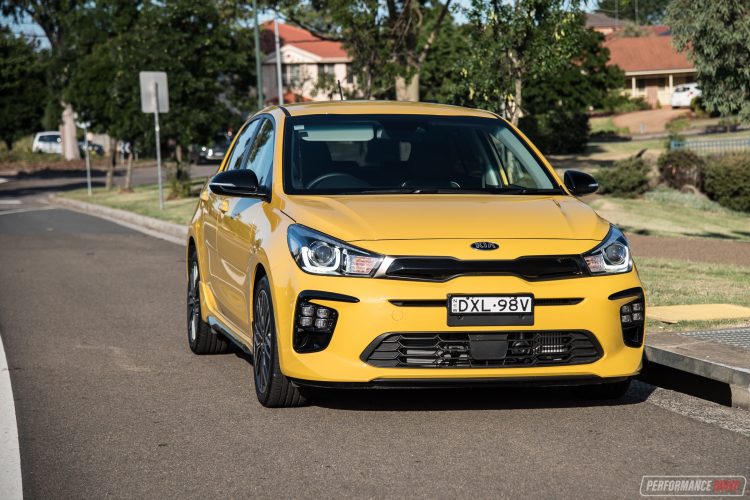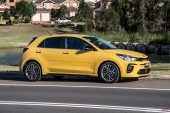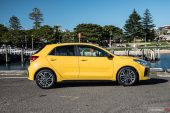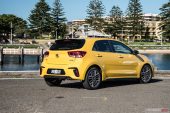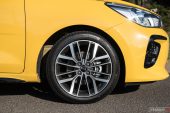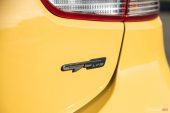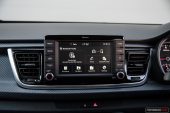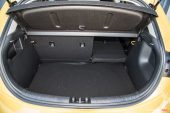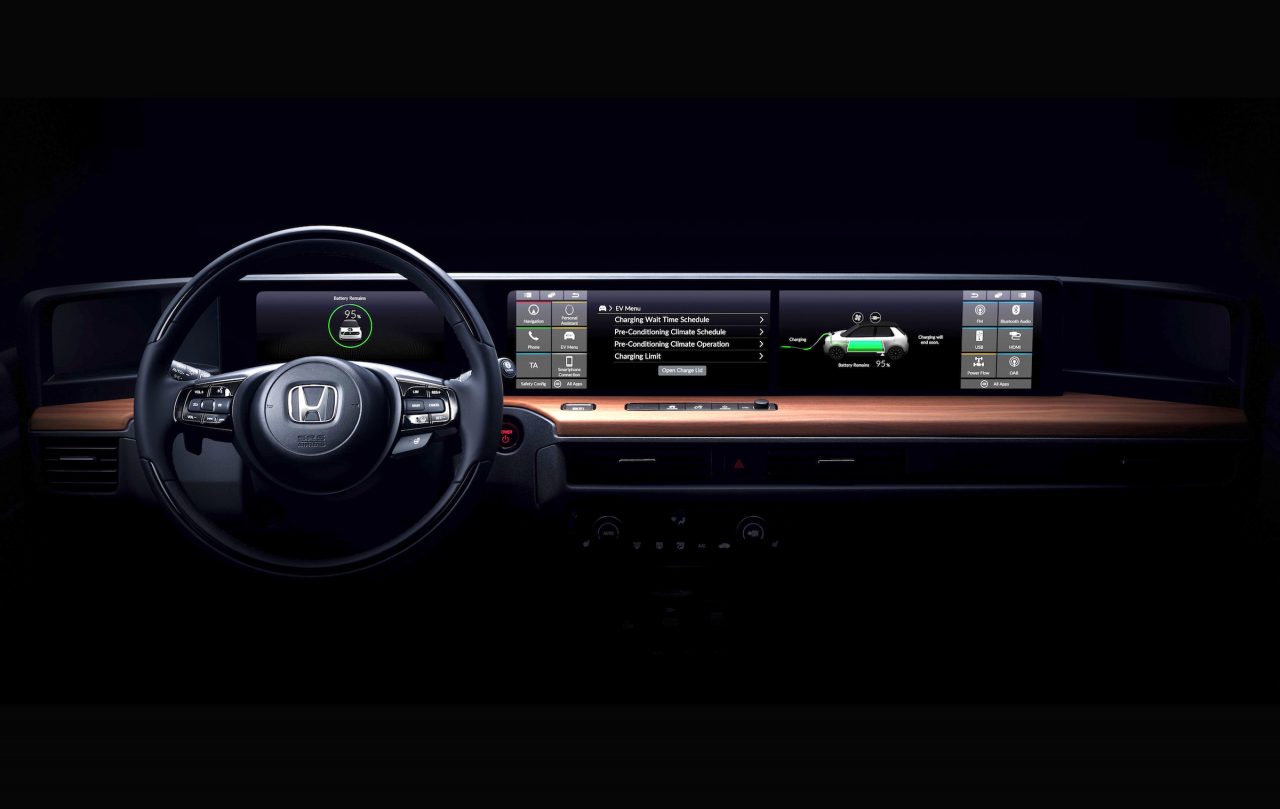What’s this cute little sporty hatch? Kia Australia is topping out the latest Rio range with the new GT-Line. If you’re in the market for a compact car, this one looks like it could be a great little proposition.
Kia Australia usually offers two sporty variants of its vehicles. You have the GT-Line, which is often about cosmetic tweaks and design flourishes, and then you have the GT. The GT models commonly come with a bespoke engine with more power than the rest of the range, and/or special components to heighten the overall driving dynamics.
The new Rio range is topped by this ‘GT-Line’. However, we think it might deserve the standalone GT badge. It ticks all of the boxes to be a GT; it comes with a bespoke 1.0-litre turbo three-cylinder engine not offered in any other variant (in Australia), making it the most powerful in the 2019 range, and it comes with plenty of sporty highlights. Nonetheless, let’s take a closer look.
2019 Kia Rio GT-Line – THE SPECS
[column width=”47%” padding=”6%”]Engine: 1.0-litre turbo three-cylinder
Output: 88kW@6300rpm / 172Nm@1500-4000rpm
Transmission: Seven-speed dual-clutch auto
Drive type: Front-wheel drive
Wheels: F & R: 17×6.5, 205/45
ANCAP: Five stars (scored 35.52 out of 37)
Tare weight: 1176kg
Power-to-weight: 13.36:1 (kg:kW)
Official fuel economy: 5.4L/100km
Economy during test: 6.3L/100km
Fuel capacity/Type: 45L/91 RON
Power efficiency: 16.29kW:L/100km[/column] [column width=”47%” padding=”0″]0-60km/h: 4.86 seconds*
0-100km/h: 9.78 seconds*
60-110km/h: 6.96 seconds*
1/8 mile: 11.40 seconds at 107.7km/h*
1/4 mile: 17.36 seconds at 135.7km/h*
Max acceleration: 0.618g
100-0km/h braking: 2.90 seconds at 39.65 metres*
Max deceleration: -1.199g
Decibel at idle: 38*
Peak decibel at 60-100km/h: 75*
Priced from: $23,090 (limited time $22,790 drive-away offer)[/column][end_columns]
* Figures as tested by PerformanceDrive on the day. Factory claims may be different
2019 Kia Rio GT-Line – THE PACKAGE
Prices for the Rio GT-Line start from a respectable $23,090 (excluding on-roads). Or, for a limited time, you can pick one up from $22,790 drive-away. For that you get a seven-speed dual-clutch automatic transmission as standard – not something you’d normally see as included kit in this market segment – matched to a peppy 1.0-litre turbocharged three-cylinder petrol engine that produces 88kW and 172Nm. This is pretty decent considering the regular 1.4L petrol, which powers all other Rio variants, produces a yawn-inducing 74kW and 133Nm.
Being the GT-Line means it is dressed in a unique bodykit. There’s a sporty front bumper bar with larger side intakes incorporating Kia’s new ‘ice-cube’ LED fog lights. These are surrounded by black garnishes, with a matching black central grille and lower intake slot. Black is also used to highlight the special side skirts, while the window surrounds and side mirrors are also complemented in black. At the rear is a pair of fog light clusters that match those on the front, with a black number plate surround, black spoiler and diffuser area, and a twin-outlet exhaust poking out from beneath.
It looks great in our opinion. Genuinely sporty and without going over the top. All of the main fixtures seem very well proportioned, too. Clean lines and defined panel contours give it an almost European aesthetic. Some 17-inch alloy wheels featuring darkened inner spokes complete the look.
Inside is similarly tasteful, and surprisingly European. For the driver there’s a nice flat-bottom three-spoke sports steering wheel, complete with perhaps the most user-friendly array of button controls we’ve seen, with a very practical and user-friendly centre console and dash fascia. Some carmakers out there like to really mess with these areas to try and create futuristic concoctions and hidden controls. Not here. The cabin and controls are really easy to understand, yet proving you don’t need to go nuts using unusual shapes and material combinations to provide an appealing design.
Even the fake carbon fibre used to decorate the dash seems well made and fitting for the decor. There’s also plenty of convenient storage solutions around the place, with cup holders and bottle holders, and excellent fit and finish. It all just works extremely well and is presented perfectly for this market segment.
Up on top of the dash is a 7.0-inch touch-screen media interface packed with Apple CarPlay and Android Auto. There is no digital radio or sat-nav, but with the connectivity options you can easily use your phone to present such functions on the screen. Tunes are played through a pretty basic six-speaker sound system, which is shared with all Rio models. Like the steering wheel controls and the dash buttons, the touch-screen is very easy to navigate, with main menu buttons positioned around the screen for quicker access.
We love the sports seats in the front of the GT-Line. They aren’t deeply bucketed, but they provide a good level of lateral support for a vehicle of this caliber – after all, this isn’t an all-out hot hatch. The seats are trimmed in premium cloth with leather-like outer sections to reduce wear and tear when getting in and out. Even the patterns on the seats seem quite premium and European, with white piping and stitching to provide some contrast.
Seating space in the front is very accommodating for this class. Thanks to the practical centre console layout and well-forward dash, it does feel open and airy, with good headroom and legroom. Rear seat room compares favourably in this segment as well. There are no climate vents in the back of the centre console but there is a power socket, which is probably more handy anyway – being a compact car, the cabin volume is quite small, so it’s not as if the air-conditioning from the front has a hard time reaching rear passengers. Boot space is rated at 325L and expands to 980L. Again, this is superior to many rivals, with the Mazda2 hatch offering 250L, the Toyota Yaris offering 286L, and the Suzuki Swift Sport offering 265L. About the only rival that offers more is the Hyundai Accent hatch, with 370L.
2019 Kia Rio GT-Line – THE DRIVE
Firstly let’s talk about that 1.0 turbo engine. This ‘Kappa’ unit is quite new, debuting overseas in 2015. It features variable valve timing for the twin overhead cams, direct injection, and a single-scroll turbocharger that controls boost with an electronic wastegate. The little engine also runs a fairly high compression ratio of 10.0:1, helping with response, yet it only needs 91 RON (or E10) petrol to survive. Peak power is achieved at 6300rpm, and peak torque is spread across a versatile 1500rpm to 4000rpm. These latter figures are the most important, as it means the driver doesn’t need to strain the engine to achieve most of its potential performance, unlike the 1.4 petrol that reaches peak torque at 4000rpm.
It comes across as an exciting little engine, buzzing and thrumming along in a happy-go-lucky manner. Immediate response isn’t as crisp as the 1.4 petrol, and off the mark acceleration is hindered by the dual-clutch transmission. These types of transmissions are inherently laggy, or can seem laggy off the mark as the clutch mechanism works similar to a manual. So, for smoother take offs the manufacturer usually tunes in a gradual clutch grab. Once you’re up and running, the engine and transmission perform well. We timed a best 0-100km/h time of 9.78 seconds, which is very respectable considering the on-paper stats. According to our testing, this easily knocks the 1.4L Rio’s time of 12.20 seconds on the head.
There are no paddle-shifters behind the steering wheel but you can use the gear lever in an up/down manner for manual changes. We found this useful when entering right-angle streets as the transmission does try to retain a higher gear as you drive around. If you’re a relaxed driver you probably won’t notice. But if you like to drive at a mild to high tempo it is best to click down a couple of gears as you enter corners in anticipation. Then you can enjoy freer-revving acceleration from corner exit.
Out on the open road the Rio GT-Line requires a mere 2000rpm to maintain 100km/h. This means it is perfectly adequate and comfortable for regular highway use. Chassis refinement and cabin insulation doesn’t set the benchmark in this class, with some road roar transmitted into the cabin. The basic torsion-beam rear suspension setup probably doesn’t help, although this layout is applied to most vehicles in this class. Unfortunately for sporty drivers the GT-Line doesn’t come with a unique suspension tune compared with the rest of the Rio range. We guess this is one area that explains why it doesn’t adopt the GT badge.
In the mountains or along an encouraging road the Rio GT-Line handles well. It’s not the most engaging in the class, with fairly vanilla steering conveying only the basic feedback back to the driver’s hands. That’s not to say it isn’t fun. It does hold on when pushed pretty hard around bends, with good grip provided by Continental ContiSport Contact 5 205/45 tyres. You simply don’t get the encouragement of a more interactive steering and suspension setup. But, again, this isn’t supposed to be a hot hatch. Where this car is really at home is in the suburbs and city. Because it’s not lightning quick, it can be fun to thread around streets and hustle through the busy lifestyle. And you can enjoy using liberal doses of throttle while you’re at it without instantly breaking the speed limit. Ride comfort is respectable, even while enduring some of our country’s shoddy bitumen.
What we like most about the drive experience is the sheer user-friendliness. There are no surprises or moments of uneasiness. It’s all laid out right in front of you, so you know exactly what to expect from it. And for a vehicle in the semi-sporty light hatch class, this is exactly the type of behaviour that’s needed. It’ll be fun for beginning drivers and still a bit of a laugh for experienced ones. And as a bonus, the engine only sips fuel, so you can drive and drive without guilt. We averaged 6.2L/100km and the official average consumption is 5.4L/100km.
2019 Kia Rio GT-Line – THE VIDEO
2019 Kia Rio GT-Line – THE VERDICT
This car has really surprised us. We liked it on paper when it was first announced, but we weren’t expecting to admire it quite so much after spending a week with it. In the light car class, this is one of the largest, and in our opinion, one of the best-looking propositions. We love the quality interior and exterior design, the exciting little 1.0L turbo engine, and the somewhat fun, user-friendly handling. There really isn’t much to fault. If you’re in the market for a compact car, this is one that definitely deserves a closer look. And keep in mind Kia’s industry-leading seven-year warranty.
The only negative comment we can think of is that it competes with the awesome Suzuki Swift Sport. And that’s priced not too far away, starting from $25,490 for the manual but from $27,490 for the auto (not a dual-clutch auto). We would take the Swift Sport over the Rio GT-Line. But, comparing the two auto models, the Rio GT-Line feels more than 84 per cent of the way there ($23,090 of $27,490). If you really can’t stretch to the Swift Sport, the Rio GT-Line is definitely a worthy runner-up prize.
[column width=”47%” padding=”6%”]PROS:
– Exciting little 1.0T engine
– Excellent cabin space for the class
– Quality design inside and out
– Very user-friendly controls and driving dynamics
– Class-leading 7-year warranty[/column] [column width=”47%” padding=”0″]CONS:
– Engine is great but just a tiny bit more power would be nice
– Standard AEB but no adaptive cruise control[/column][end_columns]
As always, if you’re thinking about buying a new car don’t forget to click here to speak with our car buying specialists.
